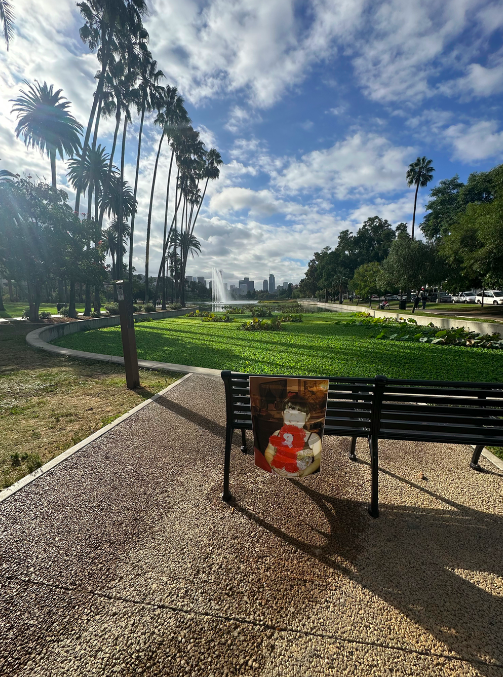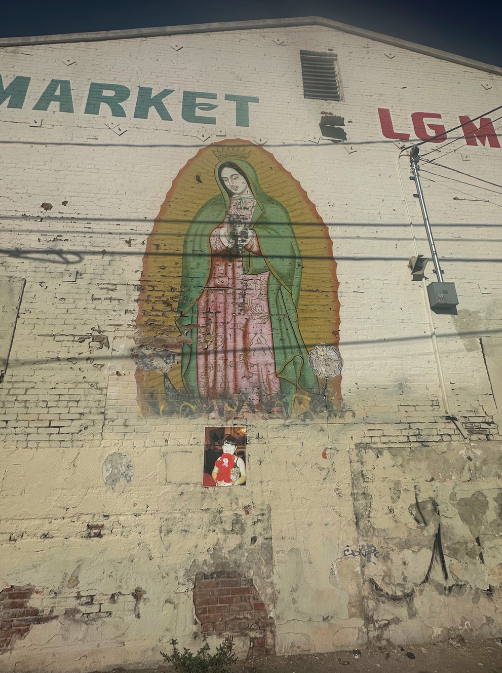Erased
Written by Josefina Chavez
My project originated out of the desperate need to preserve the memory of my neighborhood that has been untouched. I always caught myself thinking, “I should take a picture of that sign or mural.” A few weeks would go by and that thought would turn into “I should have taken that shot before that part of the neighborhood was gone.
The project is titled “Erased” because it explores the idea of memory erasure caused by gentrification. Businesses, churches, sings, apartments, houses, murals, and familiar faces have been erased and continue to be erased and displaced. This project also explores my childhood home and places in my neighborhood that make me feel at home.
Echo park has shaped so much of my upbringing. Growing up as a first generation Mexican I constantly felt out of place, I was accustomed to a different language and lifestyle at home. Neighborhoods with a latino/hispanic essence and presence such as Boyle Heights, East Los Angeles, and of course Echo park, were small pieces of Mexico to me that felt like home. As the years go by, my neighborhood faces changes and I feel like an outsider once again.
I began this project by simply going on walks and observing the specific scenes in the neighborhood that called to me. After I had a visual list of where I wanted my photo to be placed, I took a trip to staples and had a childhood photo printed as a large poster. I specifically chose the archival photo that had me with fresh cut bangs. This was to commemorate the fact that I have been getting my haircut at the same salon (Casa Nova #2) my whole life. My dad kindly accompanied me to each spot and helped me tape the poster from location to location, kept an eye out for me to keep me safe, and even got behind the camera when I was to be in the shot. The shooting process took around a week to complete.
One thing that interfered with this project was my shyness. I felt quite awkward walking into the hair salon or dickies shop to shoot. While the owners have known me my whole life, I experienced some insecurity with how I would present this project to others. I was lucky enough to have people welcome my project with open arms. Hearing their views on gentrification and sharing such deep conversation brought me comfort. I realized that I my suffering shared company with the suffering of others, as we have watched our community be erased.
I was afraid of rejection. This led me to leave out a few places in the neighborhood I would have liked to get shots of. However, I do plan on continuing the project and getting those last shots in before those markets, signs, etc, are gone.
I remember being 10 years old when the apartments across the street from me were to be reconstructed. Families that had f established themselves in L.A from foreign countries. Generations who had lived there for years were kicked out and displaced. It’s not just a house or an apartment complex. There are memories, thoughts, and emotions that live within those homes and within those who once occupied the space. Many years later I can’t help but feel for the families that have experienced this all over Los Angeles.
If you take a trip down my streets, there are many bars, expensive restaurants, shops, market prices, and housing costs. There are almost no accessible and affordable resources for the low income families/ individuals who still remain in the neighborhood.
This project was my way of preserving my neighborhood as I knew it as a child and how I see it now as a young adult. It is so important to look back and preserve the old L.A
For our memory, our children, and our children’s children.
Each hood has a little bit of magic within it. The streets sprinkle it onto the kids that play amongst them.Under the orange street lights. We know the real L.A.




